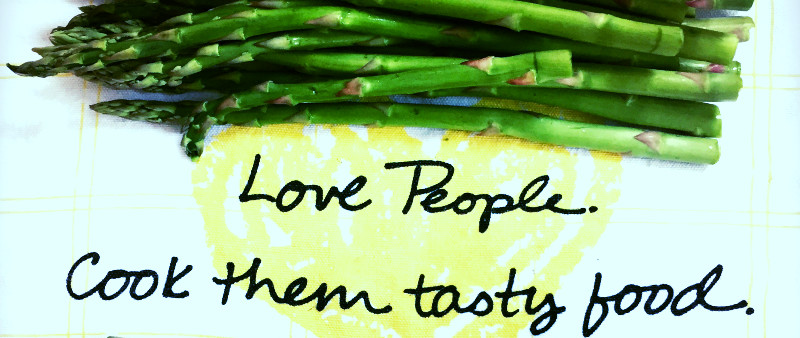If you’re looking to join the Meatless Monday movement, or simply cut back on your weekly meat intake, my vegetarian and gluten-free Potato Leek Soup is a tasty way to go. It’s heartiness is also sure to warm you up after that polar vortex that nearly sucked us all into a cold abyss last week. I love this recipe because it’s straightforward, filling, inexpensive and uses seasonal ingredients. I made a similar version (Tri-Color Potato Leek Soup) a year ago and have modified this one with a couple of my favorite super foods: ghee and nutritional yeast.
Ghee is clarified butter originating from India, which has a long shelf life when stored in an airtight container. It’s definitely a process to make, but if you do it with a friend (what’s up, C$!) it can be really fun. Not only is ghee a real food (aka none of that margarine junk), but it’s loaded with health benefits. First of all, it contains Vitamins A (good for the eyes), D (good for the bones), E (good for the skin) and K (good for the heart). These all just so happen to be fat-soluble vitamins and since they’re embedded in this dietary fat your body can readily absorb them. Secondly, ghee provides a cancer-fighting antioxidant named conjugated lineolic acid (CLA), which has been linked to preventing cancer. Lastly, ghee is great for cooking because it doesn’t break down in high heat like many cooking oils (e.g. canola and safflower). When cooking oils break down in high heat they produce free radicals, which damage our cells and DNA leading to mutations that can cause certain diseases. Ghee’s smoking point is between 325°F and 375°F, which is much higher than the smoke point of canola or safflower oil so you’re less likely to run that risk while simply sautéing your onions.
Vegetarians and vegans, if you don’t know about nutritional yeast, you ought to. Why? Well for starters, it is an excellent source of non-animal protein. Drilling down into the details, MindBodyGreen boasts that just two tablespoons of this bizarre but tasty substance (“hippie dust”) contain 9 grams of protein, beating out a glass of whole milk, an egg or an ounce of beef. It’s also a great source of Vitamin B-12, a vital nutrient for your body’s nerve and blood cell health. Most sources of Vitamin B-12 are found in animals, making nutritional yeast an important component of a healthy vegan or vegetarian diet. One tablespoon contains a full day’s supply of this critical B vitamin.
Before you hit the grocery store to gather the fresh produce you’ll need, support your community by checking the stocks of your local farmers market (if it’s still up and running). Or if you live in the DMV, give Relay Foods a try. I worked with the Relay team on my first MOARfit Nutrition for Athletes Clinic last summer and completely jumped on the bandwagon. Their online grocery store brings the basics, specialty foods and local produce together in one place–i.e. you get convenience and quality, sustainable ingredients. Ok, enough plugging for now. Let’s get on to that recipe….
Potato Leek Soup w/ Watercress

What You’ll Need:
- 1 Tbs coconut oil (or olive oil)
- 1 Tbs ghee (or unsalted butter)
- 1 sweet onion, diced
- 2 stalks of celery, diced
- 3 leeks, cleaned and cut into 1/4-inch rounds
- 3 cloves of garlic, crushed
- 1/2 tsp cayenne
- Sea salt and pepper, to taste
- 2 Tbs sherry vinegar
- 5 medium potatoes (about 5 cups chopped)
- 6 cups reduced-sodium vegetable stock
- 1 /4 cup fresh parsley, minced
- 1/4 cup nutritional yeast*
- 4-oz fresh watercress (about 3-4 loosely packed cups)
*If you prefer, used a 1/4 cup or Parmesan or Romano cheese instead of nutritional yeast.
How to Make It:
- Heat oil and ghee in a large (5-6 qt), heavy pot (I adore using my Cuisinart Dutch Oven for all soups) over medium heat. Add onions, celery and leeks, sautéing 5-7 min or until tender and translucent.
- Add garlic, cayenne and salt and pepper, cooking for another 2-3 min then add your vinegar to deglaze the bottom of the pan.
- Add potatoes, making sure to coat them in the spices and onion/shallot/leek mixture.
- Add vegetable stock and bring the mixture to a boil, then reduce to a simmer for about 15 min. The potatoes should be easy to pierce and pick up with a fork.
- Finally, add in your parsley and nutritional yeast. Using an immersion blender (if you have one), purée the mixture in your pot until smooth.
- Adjust your seasoning for spice and saltiness.
- Serve with a few tablespoons of chopped watercress and enjoy!
If you want to amp up the Yum Factor (and subsequently deviate from Meatless Monday), add 2 oz of pancetta to the mix after the onion and celery but before the leeks. This will of course remove that vegan and/or vegetarian stamp from the recipe but it does add some depth and richness to the flavor of the soup.








